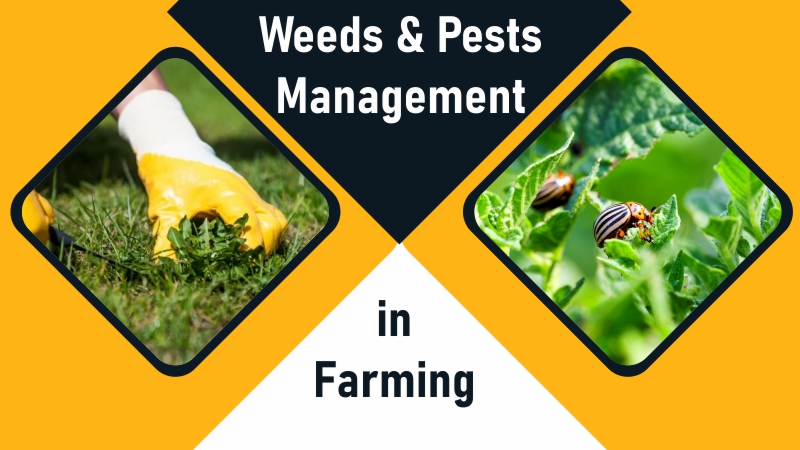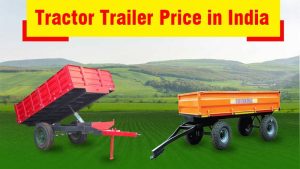Introduction:
The most significant biotic barrier to crop yields, both in developing and industrialized nations, is weeds. In general, diseases (fungi, bacteria, etc.) and animal pests (insects, rodents, nematodes, mites, birds, etc.) are less concerning, and weeds present the biggest potential yield loss to crops. Crops and weeds compete for space, sunlight, water, nutrients, and other resources. Weeds and pests also carry viruses and insects that harm crop plants. Additionally, weeds and pests endanger local wildlife and plants by destroying their natural habitats.
Weed emergence time, weed density, weed type, and crop type are only a few of the variables that affect the yield losses in crops caused by weeds. Weeds can cause a yield loss of 100% if not controlled.
What are weeds?
Plants that are growing in undesirable places are commonly referred to as weeds. On an organic farm, controlling weeds is a significant challenge.
1.1) What is weed management?
Weed management is a type of pest control that aims to stop or slow the growth of weeds, particularly noxious weeds, in order to lessen the competition they pose to desired flora and fauna, including domesticated plants and livestock, and to prevent non-native species from outdoing native species in natural settings.
The management of weeds is crucial in agriculture. Methods include burning, deadly wilting with high heat, smothering with mulch, powered cultivation with cultivators, hand cultivation with hoes, and chemical control with herbicides (weed killers).
1.2) Methods of Weed Management:
This weed management method targets weeds that have already germinated, either before the crop has been sown or when it is still in the seedling stage.
- Application of well-decomposed compost: Applying properly decomposed compost is important because improperly decomposed compost contains a lot of weed seeds. Weed seed’s vigor and viability are decreased by the fermentation process and warmth created by the breakdown. Therefore, a proper breakdown process acts as a proactive weed management strategy in crop fields.
- Cultural Weed Management: By burying weed seeds, emerging weed seedlings, and plants, as well as preventing their germination, tillage aids in the management of weeds. The vertical dispersion of weed seed in the soil layer is also influenced by the depth of tillage.
- Stale Seed Bed Technique: After primary tillage, irrigation, or rain, cultivation activities are used to eradicate newly emerged weeds. The crop is then sown with the least amount of soil disturbance possible, delaying the appearance of weeds.
- Planting Patterns: In a crop weed competitive environment, more plants get an advantage. Increased plant density results in a wider crop cover and more capacity to suppress weeds. Planting Routines The unique crop plant and variety arrangements can have an impact on weed growth. For instance, narrow planting with higher seeding reduces the biomass of later emerging weeds by lowering the height intensity of weeds that are placed beneath or under the crop canopy. Fast-growing cultivars also have an advantage over weeds in terms of competition.
- Cover crops: The application of cover crops may help to limit the weed growth in the field. In addition to shading out weeds and competing with them for sunlight, cover crops also prevent weeds from blooming. Be allopathic to weeds in specific situations and kill them.
- Inter Crowing: Growing a cover crop between rows of the main crop and letting it smother the weeds does this. Intercropping may therefore be used in weed control techniques in organic farming.
- Mulching is a protective layer of material kept at the soil’s surface; it can be made of plants, leaves, plastic, films, etc. It keeps the weeds from receiving light. Consequently, it prevents weed growth.
- Intercultural Operation: Hoes are used to removing, clear, or destroy weeds that are growing between crop rows. It decreased the number of weeds and inhibited their growth. Interculture is a useful weed-management technique that is used at two and four weeks between crop rows.
What are Pests?
In addition to the plant-feeding insects and mites detailed in the preceding text, pests can also include weeds, plant infections (particular fungi, bacteria, and viruses), rodents, and nematodes. It is estimated that pests can ruin up to one-third of all agricultural produce.
2.1) Methods of Pests Management:
Every farmer is aware of the potential harm that unwelcome visitors to their fields can do to their crops. Yes, we are referring to pests that attack crops, lower yields, decrease agricultural production, and endanger food security. While the majority of farmers now rely on chemical pesticides to protect their crops, they often do not consider how those chemicals may affect the ecosystem.
- Crop rotation:
Pests can be kept from adapting to the sorts of plants that are being grown by using crop rotation. The technique makes advantage of switching up the crops planted each year. This farming technique not only controls pests but also improves soil fertility.
- Intercropping:
When two or more crops are grown simultaneously on the same field, this practice is known as intercropping. There is a clear separation between crops of the same species when multiple plant species are grown on the same field. It is therefore effective in drawing pests away from their intended host plant.
- Maintaining the diversity of crops:
By growing more varieties of fruits, vegetables, and plants, farmers can also reduce the likelihood of pest infestations on their harvests. This lessens the likelihood that bugs may harm any crop.
- Utilizing pests to combat pests
This strategy involves using pests to control pests. To prevent crop damage, some farmers in the West have introduced predatory insects like ladybugs or mites that destroy other pests.
- Organic Pesticides:
The ability of farmers to transform agricultural byproducts into natural pesticides that do not endanger their health or cause crop harm is another compelling reason to convert to organic pesticides.
- Innovative Pest Management Formulations:
Farmers and innovators from all around the nation have created several organic formulations for the control of pests in crops. There are, however, a lot more similar formulations available to tackle the risks related to the substances.
To get weeders and pesticides at affordable prices and get detailed information install the KhetiGuru application. For tractor, tractor-price, and tractor news-related updates, install the KhetiGaadi application.




